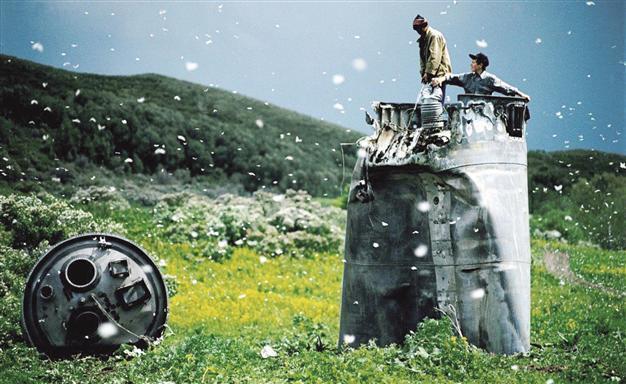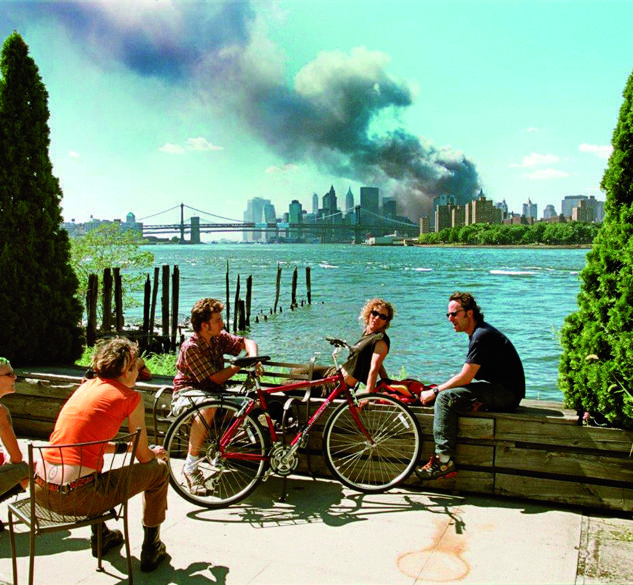Unforgettable moments from Magnum Photos at Istanbul Modern
ISTANBUL

‘Magnum – Contact Sheets,’ the recent exhibition at Istanbul Modern includes 133 works by 58 artists and focuses on the analogue age of photography with works comprising the visual history of more than eighty years
A newly-opened exhibition at Istanbul Modern’s Photography Gallery titled “Magnum – Contact Sheets” explores the creation processes of photographs from Magnum Photos, one of the world’s most prestigious photography agencies.Through the contact sheets of legendary photographs, the exhibition demonstrates the great influence of these works on visual culture from the past century through to our contemporary age. Co-curated by Lorenza Bravetta and Gabriele Accornero, the exhibition brings together select works by world-renowned photographers, including Henri Cartier-Bresson, Robert Capa, Elliot Erwitt, Eve Arnold, Josef Koudelka and René Burri.
The exhibition, organized in cooperation with Magnum Photos, Forte di Bard and Thames & Hudson, includes 133 works by 58 artists and focuses on the analogue age of photography with works comprising the visual history of more than eighty years.
The exhibition gives visitors remarkable access and insight into the decision-making processes of many of Magnum’s famous members through the inclusion of first-person accounts. The texts accompanying the contact sheets tell the stories behind the artists’ work.
Cartier-Bresson stated contact sheets are somewhat similar to the case histories of psychoanalysts, a kind of seismograph that records movements. “Everything is written down – whatever has surprised us, what we’ve caught in flight, what we’ve missed, what has disappeared, or an event that develops until it becomes an image that is sheer jubilation,” he said. David Hurn, on the other hand, noted, “Usually the clearest pictures only become obvious from the contact sheet after the event.”
With the development of digital technologies and their huge impact on photographic production, this exploration of photography’s analogue age sets out to both investigate and celebrate a technique that is becoming increasingly historical; to provide an “epitaph”, in the words of Martin Parr. In the exhibition, contact sheets and photographs are accompanied by close-up details, articles, books and magazine spreads.
A contact print is obtained by exposing an image or a set of images against a single sheet of photographic paper of the same size as the negative. Often compared to an artist’s sketchbook, contact sheets are the photographer’s first look at what he or she has captured on the film roll. Because contact sheets provide raw images of the photographs, without any intervention in the process, they offer the artist an opportunity for self-criticism and choice. In this sense, looking at contact sheets is like entering the photographer’s secret thoughts. By showing the “before” and “after” of the scene selected by the photographer, the viewer is allowed to see how that moment came to be, as if walking alongside and seeing through the photographer’s eyes as they capture the scene. Contact sheets give clues on the artist’s working process, the way they approach the subject matter and the extent to which the selected snapshot reflects reality.
The exhibition brings together works of art encompassing the visual history of over 80 years: Robert Capa’s photographs of US troops assaulting Omaha Beach during the D-Day landings in Normandy in 1944; Eric Lessing’s photographs of the insurrection in Budapest in 1956; Elliot Erwin’s photograph of Richard Nixon glowering at Nikita Khrushchev in Moscow in 1959; Burt Glinn’s photograph of the crowds waiting for Fidel Castro in Havana in 1959; Philip Jones Griffith’s photographs of civilian casualties in Vietnam in 1968, which influenced the politics of the time; Bruno Barbey’s photographs of turmoil in Paris in May 1968; Josef Koudelka’s photographs of the invasion of Czechoslovakia during the Prague Spring in 1968; Stuart Franklin’s photograph of the solitary protestor who stood in front of tanks in Tiananmen Square in Peking on the morning of July 5, 1989; Nicos Economopoulos’ shot in the Central Train Station of Tirana in 1991, denoting the concept of immigration in the Balkans in the late 20th century, and a group of young people photographed by Thomas Hoepker in East River, New York, on the morning of Sept. 11, 2001.

It also includes some of the most iconic portrait photographs of political figures, actors, artists and musicians of the 20th century: Philippe Halsman’s 1948 photograph of his close friend Salvador Dali inspired by Dali’s painting titled “Leda Atomica;” René Burri’s photograph of Cuba’s number two man Ernesto “Che” Guevara, taken during an interview in 1963; Leonard Freed’s photograph of Martin Luther King after receiving the Nobel Peace Prize in 1964 and depicted with civilian hands extended towards him in protection; Eve Arnold’s extraordinary photographs of Malcolm X in Chicago in 1961; Peter Marlow’s photograph of Margaret Thatcher, a.k.a the “Iron Lady,” the first woman Prime Minister of the U.K., and David Hurn’s photograph of The Beatles shot in Abbey Road Studios in London.
In the opening of the exhibition on Feb. 26, Chair of the Board of Istanbul Modern Oya Eczacıbaşı said, “Those Magnum members whose works are displayed in the exhibition convey the stories of their photographic processes, how they reach the ‘decisive moment’ after films are developed, and how they carefully select the final images from several contact sheets. By seeing the contact sheets, which are in a sense the ‘logbooks’ of the photographer, the viewer witnesses how these unforgettable photographs created the visual history of an 80-year epoch.”
She also added the exhibition served as an homage to the analogue age, a method of photography now lost to the development of digital technology, and provided an opportunity to see the unique photographs taken by those who experienced serendipity during photographic processes, “who were at the right place at the right time” and who captured the zeitgeist.
The exhibition at Istanbul Modern can be seen until Aug. 2.
















